-
TrackoBit
Manage commercial vehicles with the new-age Fleet Management Software
TrackoBit -
TrackoField
Streamline your scattered workforce with Field Force Management Software
TrackoField -
Features Resources
-
Blog
Carefully curated articles to update you on industrial trends. -
White Paper
Insightful papers and analysis on essential subject matters. -
Glossary
Explore an alphabetical list of relevant industry terms. -
What’s New
Get TrackoBit & TrackoField monthly updates here. -
Case Study
Explore the cases we solved with our diverse solutions. -
Comparisons
Compare platforms, features, and pricing to find your best fit.
-
About Us
Get to know TrackoBit: our team, ethos, values, and vision. -
Careers
Join the most dynamic cult of coders, creatives and changemakers. -
Tech Support
Learn about our technical support team and services in detail. -
Events
Check out the exhibitions where we left our marks and conquered. -
Contact Us
Connect with us and let us know how we can be of service.
11 Great Tips to Manage a Fleet of Vehicles (Reduce Biggest Operational Costs)
- Author:Nandita Gupta
- Read Time:11
- Published:
- Last Update: June 19, 2025
Table of Contents
Toggle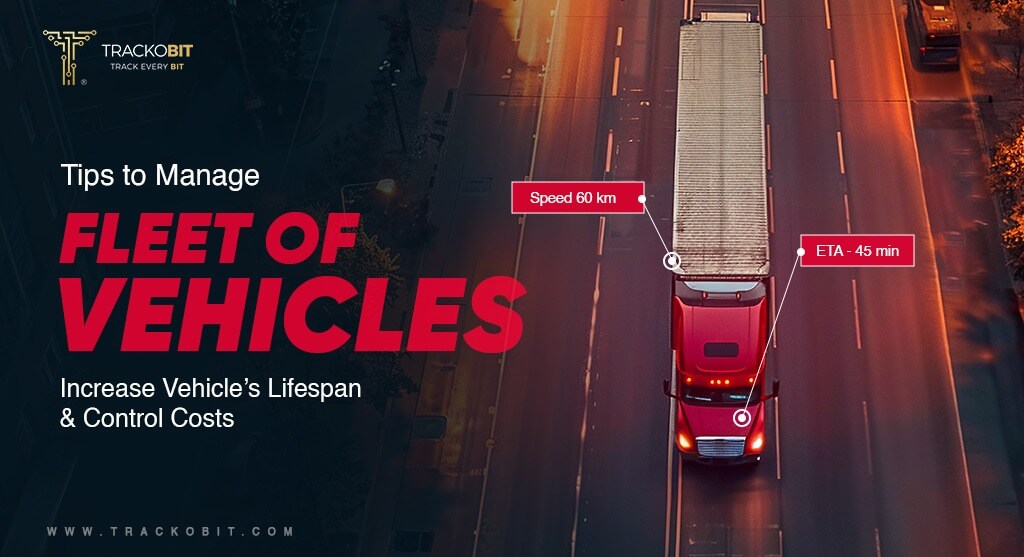
Every fleet can use some strategic management. Here are 11 ways to manage fleet operations that slice down your operational costs and transform you into a great fleet manager.
Table of Contents
Toggle
Managing a fleet of vehicles is harder than one can imagine. It requires a lot of smart decision-making, from vehicle tracking to keeping up with maintenance schedules. As a fleet manager, you have to plan and schedule efficient trips for a given fleet mix. All this while controlling fuel and operational costs and staying compliant with security and sustainability standards. Phew, that’s too much.
Big salute to fleet managers – who do it tirelessly. But sadly, despite doing so much, fleet operations result in fallout. There are disappointments such as delayed cargo arrival, more unexplainable fuel consumption, and vehicles going obsolete before their promised lifetime.
Gartner says the fleet management market is all geared to grow to $16 billion by 2025. Good Lord, this is huge, this looks like some great opportunity fleet managers can rope in. But how is it possible with poor management practices?
Don’t worry, here are your 11 crazy but totally impactful tips to manage fleets without stalling your spirit (and engine too).
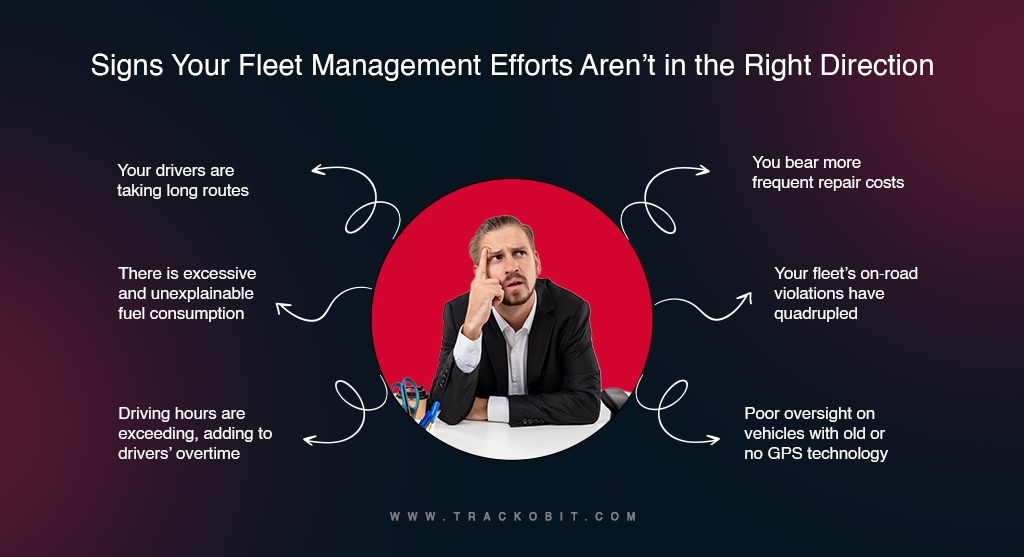
How To Manage a Fleet of Vehicles? Here are 11 Much Needed Ways!
Here are your much-needed tips for managing fleet vehicles. Don’t wait, just implement them already.
1. Keep an Assortment of the Right Fleet Kind and Size
Every fleet operating business has a nuanced need for vehicles in their fleet. It mainly depends on the scale of the business, the budget, and the ability to handle spiking operating costs such as fuel, wages, allowances, etc.
Ensure you have the right mix of vehicles with the quantity you need for your business. Don’t go overboard and lease tons of vehicles (that you don’t necessarily need). It will only lead to such vehicles’ underutilisation and decrease their longevity because they will be parked in a lot (all just to depreciate with time).
| 💡People Also Ask
Q. What does a fleet of vehicles include? Ans. A fleet of vehicles can consist of cars, trucks, earthmoving vehicles, or a combination of all. Q. How many minimum vehicles are in a fleet? Ans. A fleet consists of typically more than 5 registered vehicles. However, businesses that have 50 or fewer vehicles or lease/buy 5 or more vehicles per year are small-business fleets. |
2. Stick up to a Routine Maintenance Schedule (without fail)
To prevent mid-route malfunctions, ensure your vehicles receive regular maintenance.
Don’t track your maintenance cycles over spreadsheets or from ledgers. Make sure your vehicles are often inspected and are going for regular maintenance.
It’s time to go for cloud-based fleet management software that reminds you of upcoming service schedules and provides reports on road or trip events.
| 💡People Also Ask
Q. How often does a fleet of large commercial trucks go for preventive maintenance? Ans. Most companies do them quarterly. On average trucks are driven 100,000 miles a year, so it’s best if they undergo servicing after 25,000 miles. Q. Which commercial vehicle requires the most maintenance? Ans. Well, it all depends on the type of vehicle. Like:
|
3. Pay Your Fleet Insurance (if you didn’t)
The fleet that often deals in the transportation of heavy, time-sensitive, or hazardous consignment needs to be backed by commercial fleet insurance. Insurance helps you insure your expensive construction materials or high-value medical equipment in case of emergency.
Note that, fleet insurance is different from regular car insurance, it covers your small to heavy commercial vehicles and drivers. You can purchase a policy that covers the fleet mix you use to carry out daily operations. Most insurance policies group their offerings mainly as:
- Small fleet insurance
- Large fleet insurance
| 🔍 Go for Usage-based Insurance or Pay-as-you-Drive Insurance
Usage-based insurance or pay-as-you-drive a.k.a telematics insurance is evaluated based on driving habits. This requires you to use a telematics software solution that assesses your fleet’s overall driving patterns. This assesses information about driving behavior such as over speeding, harsh acceleration, braking, etc. Based on such telematics data, the insurers price an insurance policy. It’s like an undertaking to ensure that your fleet is safe to operate. |
4. Share Driving Rules & Gauge Driver’s Actions
Share clear goals with your drivers and explain driving rules to promote safe driving events. Track your drivers’ actions through driver monitoring systems (a subset of video telematics solutions). This solution lets you watch over your drivers’ actions via a dashcam.
You can track anomalies like:
- How often they use phones or get distracted while driving
- How frequently they have proxy drivers in place
- No. of times they smoke, feel drowsy, or exceed their HOS
When you are able to track the above actions, it gets easy to coach or exonerate the drivers who aren’t careful behind the wheel.
| Hold Your Drivers’ Accountable For Their Actions
TrackoBit’s driver management system offers two broad solutions — a driver monitoring system and a driver behaviour analysis. —> With a driver monitoring system (DMS), you get to live stream into your driver’s cabin to understand how attentively or carelessly they are driving the fleet. You get notified whenever they are freewheeling, smoking, drowsy, or absent from the cabin. —> Moreover, when you invest in driver behaviour monitoring solutions, you get comprehensive reports detailing events like harsh braking, acceleration, and overspeeding — every event that’s detrimental to the engine and driver’s safety. Get Yourself a Packaged Deal!!! As a packaged deal, when you sign up for our video telematics systems, you get ADAS solutions that let you recognise how efficiently your fleet is driven on the road. You get to see when your vehicle is changing lanes frequently, cornering, tailgating, jumping red lights and disobeying traffic rules. |
Explore how you can ensure safe and productive driving with our exclusive driver scorecard.
5. Ditch Physical Maps, Go for Route Planning Software
Stop managing routes and assigning trips over Excel. Use an automated route planning software that lets you save time and assign trips to multiple vehicles — all at once.
TrackoBit simplifies the process of:
a) Creating Tours for Your Fleet Mix
In the system, you just have to mention the delivery location, define the duration, and set the sequence of the halts (as per clients’ priority). Voila, there you go on your custom tour.
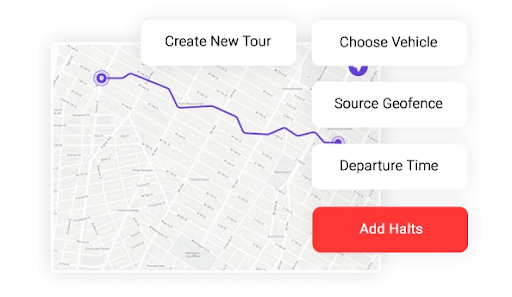
b) Managing Multiple Trips
Manage multiple trips whether the vehicle is at rest or in transit with our trip management module. Assess key data on the go and feel free to download its PDF or import it in the Excel format.
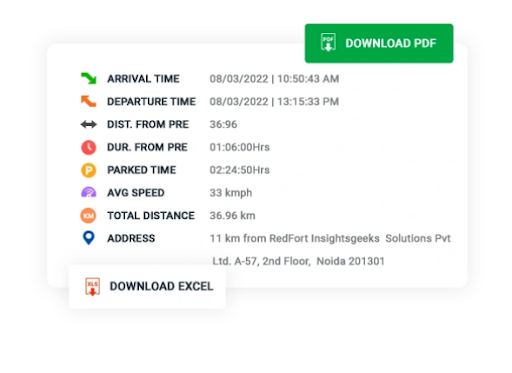
c) Monitor Routes Your Fleet is Travelling On
Watch all vehicles live and find out which route they are taking. Understand the best route and save them for future use. With our automated solution, you can clearly define routes and trips for your fleet ensuring that everything is on schedule and the fuel is consumed rationally.
6. Go Digital with Record-keeping
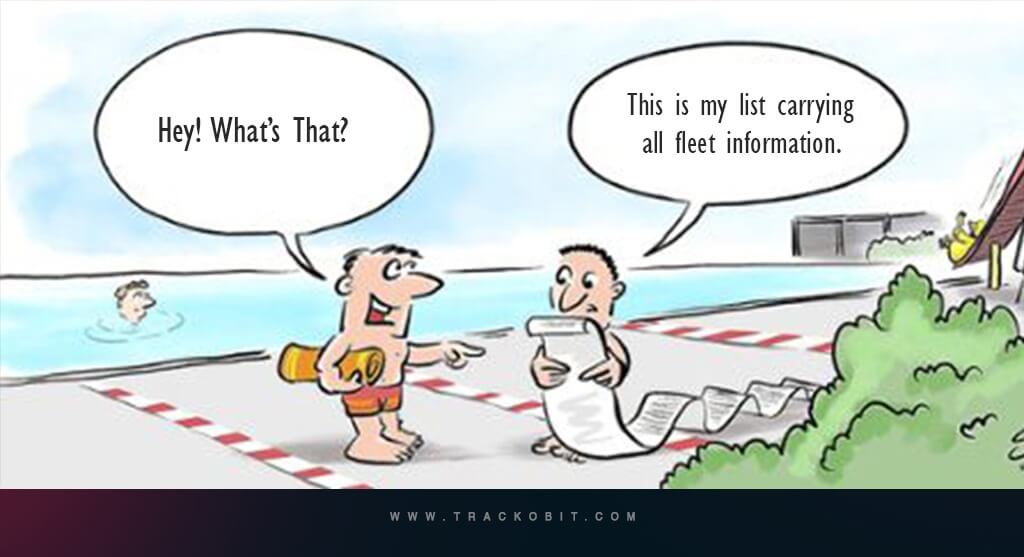
Storing fleet information physically, including insurance papers, driver’s documents, and DVIR reports can be very taxing. Oh boy, we can only imagine people using files and folders to collect and carry receipts, documents, and evidence. When online storage is cheaply available, you simply can’t make an excuse — oh, I can’t seem to find that document.
A genius move would be to go for digital platforms that help you record every invoice, receipt, and driver’s record on the cloud. When you place your bet in the driver app from TrackoBit, you get options to generate eDVIR (electronic driver vehicle inspection) reports. Your drivers can simply fill in the report through their smartphones and submit it on the go.
Read Blog – What is DVIR? Who All Has to Fill It?
7. Pre-set Guidelines for Purchasing & Disposing of Vehicles
Set rules for buying and disposing of vehicles based on their cost, fuel use, and regular upkeep. Make sure you have a trail of detailed records of all vehicle transactions because it’s very helpful to maintain transparency during checks.
For disposal of your vehicles, choose options like selling, donating, or recycling, depending on the condition they are in. You should regularly update the rules to stay parallel to current government laws.
| 💡People Also Ask
Q. How long should you keep fleet vehicles? Ans. Well, replacing or disposing of vehicles depends on the age of your vehicle, mileage it has covered, and other safety measures. After 15 years, any commercial vehicle is supposed to go for a test, if it stands unfit, then the vehicle will be sent for scrap as per commercial vehicle scrap policy rules. |
8. Keep Clients in Loop, Affirmed of Consignment’s Arrival
Fleet operating businesses have the responsibility of safely transporting valuable consignments and cargo to the recipients aka clients.
Therefore, it’s given to use fleet management software that generates precise, self-updating ETAs and tracking links with the clients. This small but significant aspect lets all parties involved know when to anticipate the arrival of the expensive cargo.
TrackoBit’s fleet management solutions also empower you to collect digital delivery proofs in the form of e-signature, bar code scans, and OTPs. It validates the safe arrival of the consignments.
See For Yourself How TrackoBit Can Help Manage Your Fleet Operations Efficiently!Our software is suited to surpass your every goal and bottom line — whether it’s to slash time to plan routes and driver schedules or save costs on operations carried via multi-modal journeys. We are Your Ally in Every Situation!
|
9. Watch Over Fuel Consumption Patterns
To manage your fleet of vehicles optimally, it’s imperative to periodically track your fleet’s fuel consumption pattern. It’s vital to place investments in fleet management systems that as an extension offer powerful fuel monitoring systems.
Having such a feature will help you ascertain the timeline or frequency when the fuel is refilled or drained. All is presented through a graphical fuel chart – which you can use to compare the performances of drivers, vehicles, and routes to make well-informed decisions.
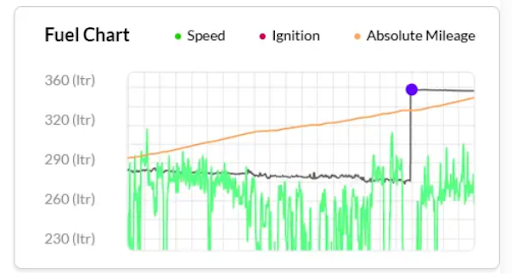
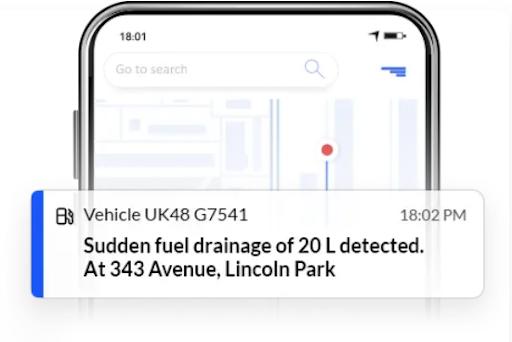
When you choose the asset and fuel management system by TrackoBit, you get reports and insights that provide detailed information on fuel consumption, mileage, and refill activities. Plus, the software is compatible with top-grade fuel sensors present under the sun– which helps with more data accuracy.
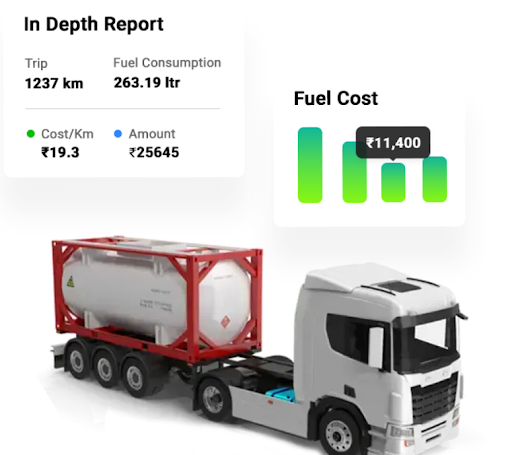
Read Blog – Types of GPS Trackers TrackoBit Supports
The renowned software provides easy-to-dissect reports explaining how much fuel was consumed per assigned or covered trip, along with the fuel costs that were borne. Very useful in times like today when fuel costs are one of the highest operating costs. This makes managing fleet vehicles much easier and more efficient.
10. Measure Important Metrics & KPIs (and compare them)
What is fleet management without tracking essential metrics and KPIs? How would you monitor progress, optimise operations and save costs otherwise?
Pre-define a few solid areas or metrics that will give you insights into your vehicle performance in terms of efficiency and operating costs incurred or saved. This becomes a lot simpler to do when you invest in integrated fleet management software with an analytical dashboard, where you can create tons of visually appealing and data-led reports for better analysis and decision-making.
Through the software, you can review reports on fuel spending, drivers’ performance, the effectiveness of routes and trips taken, the success rate of on-point schedules, and trip creation. Like literally everything.
It’s a lot better than collecting receipts and analysisng the spending using a boring spreadsheet where you do the ugly calculations like Betty from the finance department (sorry, no offense to her).
TB’s Analytical Dashboard is All You Need to Track and Optimise Your Fleet Management KPIs.
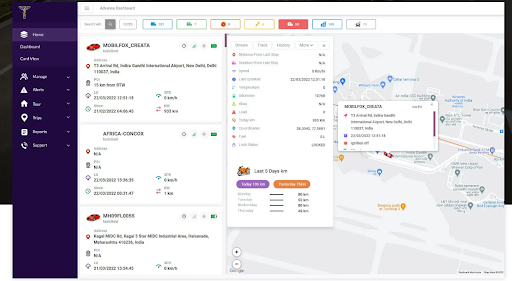
Explore TrackoBit’s Analytical Dashboard —->
11. Invest in Scalable Fleet Management Software
Big industry giants believe —
“A logistics or transportation company that counts on automation tools for effective route planning, tracking vehicles, maintenance schedule, and driver behavior are at a much better chance to comply with the delivery schedule. Operations running without automation and supervision are a total sham.”
In the beginning, middle, and end, it takes an all-encompassing fleet management software that lets you:
- Improve the utilisation of your vehicle
- Track vehicles/assets till they safely arrive
- Set them on the most optimised paths
- Monitor vehicles’ live activities and current routine
- Alerts about the drivers’ life-threatening on-road activities — all while helping you reduce operational spending.
It is a packaged deal that you wouldn’t want to trade off for anything else when the goal is to run safe, sound, and productive fleet operations.
The above tips for managing fleet vehicles will work only when you replace your old, boring, and manual methods with streamlined fleet management software.
Before We Part…
The recipe for efficient fleet operations is optimally schedule, track, and manage your fleet of vehicles. It doesn’t take a village to manage a fleet of just 20ish or over 100 vehicles. You just need to prepare a checklist based on the above tips and comply with it without flinching.
Despite doing everything, if your operations are adding more costs than margins and consignments are arriving after a long transit time in poor condition — do you know what this means? You are not making a sound investment in a one-stop fleet management solution like TrackoBit. You have no idea how this powerful software can uncomplicate your fleet operations.
Nandita is the Team Lead for Content Marketing at TrackoBit, bringing over a decade of experience in B2B, B2C, and IoT sectors. She has a proven track record of helping Read More
Related Blogs
-
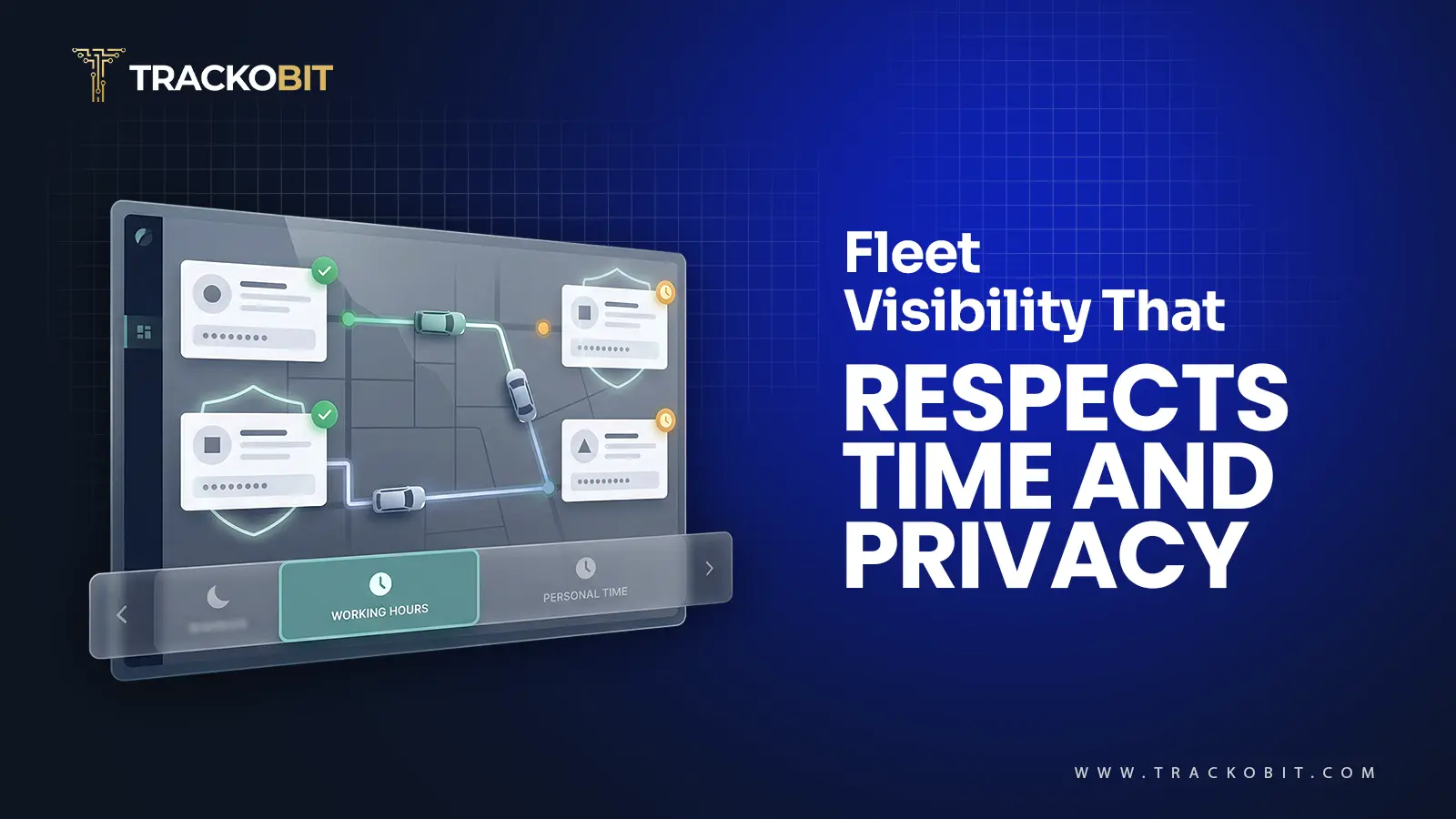
When Tracking Needs a Clock: Rethinking Fleet Visibility
Tithi Agarwal December 24, 2025Read on to understand why fleet tracking works better when it follows working hours. Because visibility should support operations, not…
-

What Makes TrackoBit’s Video Telematics Software Truly Next-Gen?
Shemanti Ghosh December 17, 2025TrackoBit’s video telematics software blends smart video intelligence with full server control. The result? Superior fleet reliability and safety.
-

Plug, Pair, Perform TrackoBit Introduces BLE Sensor Integration
Tithi Agarwal November 26, 2025TrackoBit’s BLE Sensor Integration enables wireless, real-time monitoring with faster installs and accurate insights. It improves fleet efficiency, visibility, and…
-

How to Use Driver Behavior Reports as a Sales Hook to Close Big Fleets
Tithi Agarwal October 16, 2025TrackoBit’s driver behavior reports empower fleet providers to win big contracts by showcasing safety, efficiency, and measurable ROI.

Subscribe for weekly tips to optimize your fleet’s potential!
Your inbox awaits a welcome email. Stay tuned for the latest blog updates & expert insights.
"While you're here, dive into some more reads or grab quick bites from our social platforms!"Stay Updated on tech, telematics and mobility. Don't miss out on the latest in the industry.
We use cookies to enhance and personalize your browsing experience. By continuing to use our website, you agree to our Privacy Policy.


































